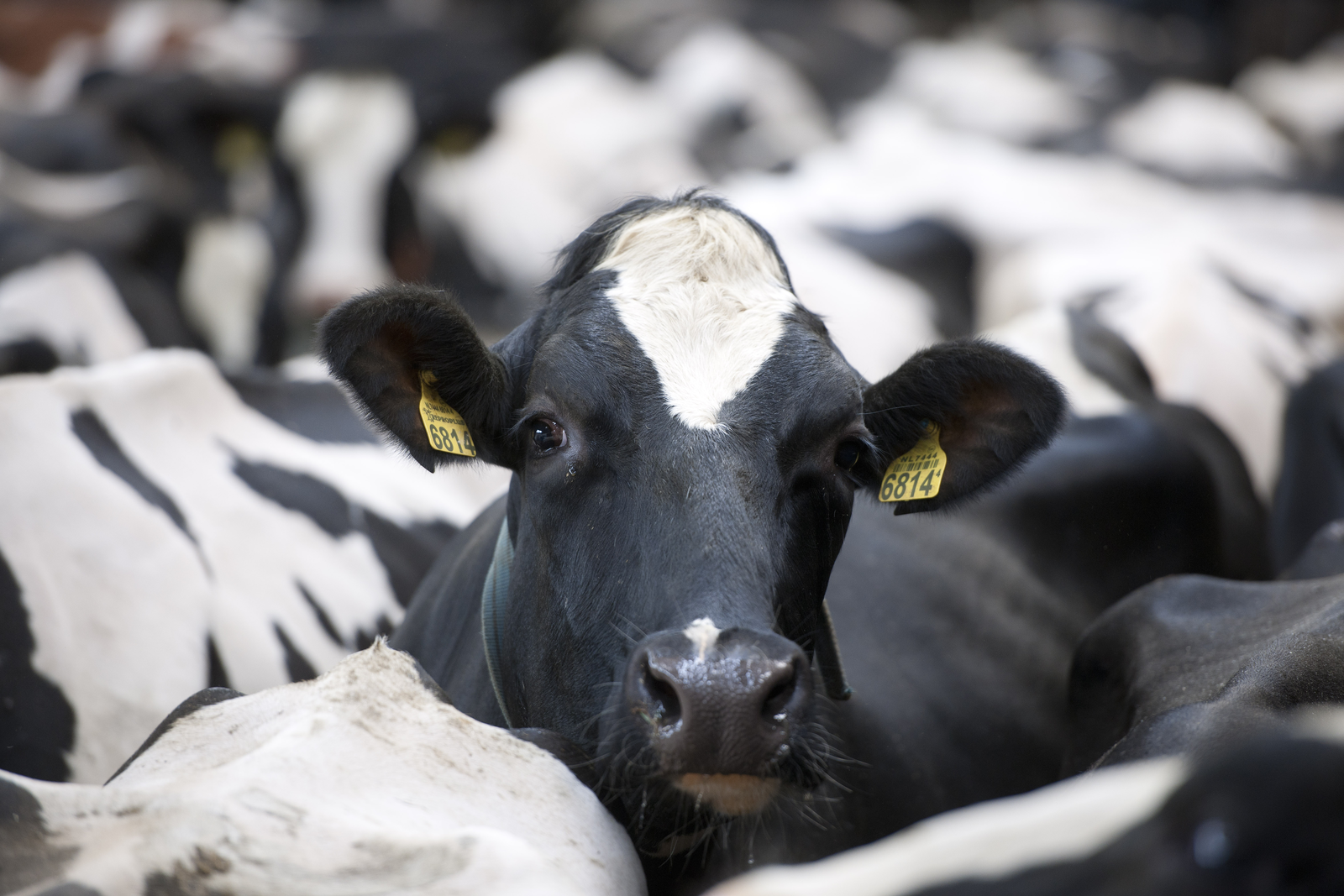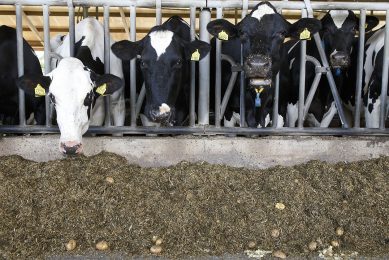Phileo symposium theme: High risk periods for cows

Healthy cows are the basis for being productive, whether they are kept for milk or beef production. During the production stage there are several high risk periods that may have high impact on future health and productivity of cattle. How to manage a herd during these high risk periods was therefore the theme of a global ruminant symposium on Health & Management, organised by Phileo Lesaffre Animal Care.
The international event took place on June 1-2 in Toulouse, France and attracted a large audience of ruminant specialists (more than 260 people) from around the globe. Leading experts shared their knowledge in 8 oral presentations on how to best manage dairy and beef herds for optimum health and production.
Setting the stage: rearing calves effectively
The first topic on how to successfully raise dairy calves during the critical preweaning period was covered by Alex Bach from the Icrea research institute in Barcelona, Spain. Bach zoomed in on the importance of feeding calves and heifers properly in order to achieve rapid growth in early life. This may lead to up to 225 kg of additional milk during the first lactation period. Apart from milk or milk replacers in the calves’ diet, also solid feed intake is of pivotal importance, according to Bach. In this context, it is moreover recommended to wean calves when they at least consume 2 kilograms of dry feed per day.
Managing and monitoring the transition period of dairy cows
Dairy cows experience a state of negative energy balance during the transition from pregnancy to lactation, when the energy demand of milk production cannot be met by feed intake alone. This will lead to negative health events and lower production figures. Conditions may differ between cows. Apparently, the answer lies in the feeding pattern, prior to calving. Dr Daryl Van Nydam Director, Quality Milk Production Services Animal Health Diagnostic Center, Cornell University, USA found that cows, overfed energy in the dry period, had almost 3 times as many episodes of hyperketonemia in the first 3 weeks postpartum, compared with cows that were fed to meet but not exceed energy requirements. The Cornell researchers recommend individual blood sampling in order to detect the incidence of hyperketonemia. Mild cases can be treated by drenching with propylene glycol. More severe cases may benefit from intravenous dextrose, in addition to propylene glycol.
Key factors successful cow’s transition
Field studies of transition cow management using “Transition Cow Index” (TCI) as the outcome variable have shown that housing constraints related to cow comfort are the major risk factors for fresh cow health in freestall dairies today. Kenneth Nordlund, emeritus clinical professor at the University of Wisconsin, MD USA, recommends TCI as a useful tool to effectively measure the situation and 2 conditions in cow transition management. Key factors to improve fresh cow health are provision of sufficient bunk space, so that all transition cows can eat simultaneously, minimizing social stress or the need to establish social rank during the prepartum period, provision of soft bedded surfaces for standing and resting, and sizing of stalls and packs to facilitate the motions of lying and rising for large, mature cows, and a high quality program by herd personnel for early identification of fresh cows that need medical attention.
For more information on dairy cows see
Dairy Global
Improve resistance to metabolic and infection diseases
The incidence of metabolic and infectious diseases varies greatly during the lactation cycle, according to Pierre Lacasse from the Sherbrooke R&D Centre in Quebec, Canada. Most new cases of clinical mastitis and other infectious diseases appear at the beginning of lactation. The incidence increases with the level of milk production. Particularly during the first 2 weeks of lactation, cows are in negative energy balance and they must mobilise body reserves to balance the deficit between food energy intake and energy required for milk production. Lacasse and his coworkers carried out a number of trials on milking patterns in order to improve resistance to the diseases mentioned. The results of their studies indicated that reducing the amount of milk harvested postpartum while maintaining milking stimuli reduces metabolic stress and immunosuppression without compromising productivity of high yielding dairy cows.
Innate Immune response of dairy ruminants during mastitis
Mastitis is a major threat to the dairy industry, due to its impact on animal health and milk quality says Guillaume Tabouret of the INRA Research Institute in Toulouse, France. Moreover, it is the main reason for the use of antibiotics in dairy cows. Consequently, udder infections are causing substantial economic losses. The answer seems to lie in activating and improving immune functions. The innate immune response is a highly coordinated process involving a dense network of interactions between populations of immune cells. Understanding the immune mechanisms involved during mammary gland infections is crucial in developing measures to control mastitis.
Metabolic adaptation, innate immune system and liver function
The transition period is the most critical phase in the life of high yielding dairy cows, says Erminio Trevisi of the Università Cattolica in Piacenza, Italy. In a few weeks cows are submitted to many challenges that require prompt and effective adaptive responses. Therefore, the immune-metabolic profiling is a valuable tool in the management of health and welfare in this period, particularly for direct diagnosis of sub-clinical diseases. According to Trevisi, composite indices, based on the assessment of few blood variables associated with inflammation and consequences of medium-long term on the liver functionality, are promising tools for the detection of cows with subclinical health problems and act accordingly in management and nutritional strategies.
Managing growing beef cattle
The cow-calf industry in the USA is extremely diverse, says Dr Matt Cravey of Phileo, USA. Ranches throughout the US vary in climate from arid to tropical; short grazing seasons to long grazing seasons; and in herd size from less than 20 to over 40,000 mother cows. And there is an extreme variation in genetics and environment. Yet the beef industry’s goal is to produce consistent, high quality protein for the consumer. This is quite a challenge, considering the extreme genetic and environmental variation. Dr Cravey highlighted a number of herd management recommendations in order to achieve this goal. These range from proper weaning programmes, housing and treatment, to nutrition and vaccination.
Large scale beef production
To conclude, a practical insight in a feeder operation was given by Dr Kendall Karr, director nutrition services of Cactus Feeders in Amarillo, TX USA. Cactus Feeders is the second largest cattle feeding company in the world and produces about 1 million head for harvest each year. The company runs 9 feed yards ranging in size from 38,000 to 85,000 head of capacity. These facilities are located in Texas and Kansas and provide a one-time feeding capacity of 527,000 head.
The Farm, a platform dedicated to knowledge sharing and scientific expertise
Respond to market demands through innovation is Phileo’s primary aim in developing innovative solutions to meet the ethical, health and performance challenges facing the farming world of the future. The symposium ended with the visit in ‘avant-premiere’ of The Farm. It is equipped with the latest generation tools enabling Phileo to gather in a single location both the animals and the analytical and laboratory equipment needed in order to develop new solutions. The research focuses on the study of intestinal flora, detection of various mycotoxins, assessing the impact of animal feeding methods on the environment, and improving animal welfare. The Farm aims to promote innovation, knowledge sharing and customer proximity in this fast-growing field of Nutrition and Animal Health. Valentin Nenov, Global Ruminant Manager at Phileo was the chairman of the Global Ruminant Symposium. He concluded: “during the global ruminant symposium, the invited speakers presented different strategies to manage the critical periods in beef and dairy production. These strategies tackled all aspects of the modern farming from housing & management to nutrition & health. The ruminant symposium brought together vets, immunologists, and nutritionists and combined all different strategies and expertise in global solutions for better managing the high risk periods in beef and dairy production, taking into consideration the health, nutritional, behavioural and management challenges.”











